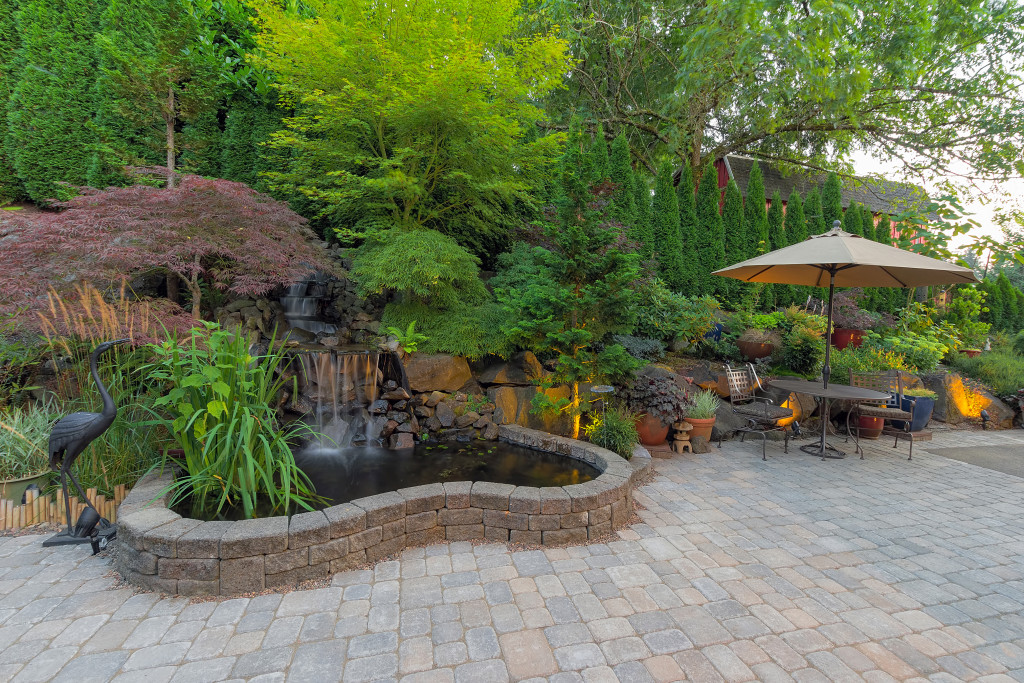- Start with a solid foundation by testing the soil and ensuring adequate drainage.
- Choose the right plants based on climate, hardiness zones and temperatures.
- Make a garden plan to utilize resources and consult the garden efficiently.
- Design with function in mind to create a space that can be enjoyed for years.
- Choose low-maintenance features like native plants, mulch and hardscaping elements.
Designing your landscape with function in mind is essential for creating an outdoor space that meets all of your needs. Here are five tips to help you improve your landscape design and make it more functional. Following these suggestions, you can create a beautiful outdoor space that is inviting and comfortable for all kinds of activities.
1. Start with a Solid Foundation
The first step towards improving your landscape is ensuring a solid foundation. Ensure the soil is deep and nutrient-rich, that drainage is adequate, and that there are no compaction issues. If necessary, test the soil for pH levels and other nutrients that may be lacking to determine what products are best suited for your landscape and how much of them to use. A strong foundation will facilitate the growth of healthy plants and ensure your landscape can withstand the elements.
2. Choose the Right Plants by Climate

When choosing the right plants for your landscape, consider the climate. Different plants grow better in various climates, so research what will work best in yours. In dry areas, choose drought-tolerant grasses and low-water shrubs. For wetter regions, select native plants that can tolerate downpours. Pick perennials that will come back year after year and annuals to fill in the spaces between them. Consider evergreen trees, which keep their foliage all year round, and deciduous trees, which shed their leaves each autumn.
Consider temperatures as well; select hardy plants that can withstand cold winters and hot summers. Research local nurseries and garden stores for hardiness zones to learn which plants are best suited for your area.
3. Make a Garden Plan
Creating a garden plan is an important step in creating the perfect landscape. A well-thought-out plan efficiently utilizes space and resources, considering soil type, climate, existing landscaping elements, and more. If you don’t have experience in gardening or horticulture, consulting with reliable garden designers can be extremely helpful in creating the ideal plan for your landscape. Garden designers have the necessary skills and expertise to create a well-balanced garden plan to meet your needs and desires.
4. Design with Function in Mind
When planning your landscape, consider how you will use the space. Consider what activities or functions you would like to do: entertaining guests, relaxing outdoors, creating a play area for children or pets, or having a working outdoor kitchen and dining area. This will help you create the perfect outdoor oasis. When deciding on features and materials, consider how they will affect the functionality of your outdoor space. For example, artificial turf may be a great option if pets need to use the area frequently.
Ultimately, by keeping function in mind when designing your landscape, you can create a space that will be enjoyed for years to come.
5. Choose Low-Maintenance Features
Finally, selecting low-maintenance features can help make it easier to keep your landscape looking great over time. This includes choosing native plants that can withstand the climate in your area and opting for hardscaping elements that require little upkeep.
Here are some low-maintenance features to consider incorporating into your landscape in detail:
Native Plants
By selecting plants native to your area and region, you can reduce the time and energy it takes to maintain the landscape. Native plants are already adapted to thrive in the local climate, requiring far less care than non-native species.
Mulch
Adding a layer of mulch around your trees, shrubs, and other plants helps to conserve soil moisture and reduce weeds. Mulch also requires less maintenance than grass or other ground covers, which need frequent mowing and trimming.
Hardscaping

Incorporating hardscaping features into your landscape, such as patios, pathways, retaining walls and fire pits, can add a beautiful aesthetic to your yard. These features require minimal maintenance and can last years with proper installation and care.fb
Irrigation Systems
Installing an irrigation system is one of the best ways to ensure that your landscape stays green and healthy without any effort. An automatic sprinkler system will water the garden regularly, meaning you don’t have to worry about manual watering.
Closing Thoughts
Improving your landscape doesn’t have to be difficult or time-consuming. You can transform your yard into a beautiful and functional outdoor oasis with a few simple steps. Using these tips, you can easily create a stunning landscape that you can enjoy for years.

